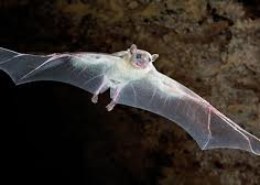Can flying bats be regarded as blind?
Are Bats Blind-Flying Bats
Bats are not blind and can actually see very well with their eyes.It has nothing to do with vision. Despite the tiny eyes and nocturnal lifestyle, none of the roughly 1,100 bat species is blind.While most bats do have advanced ears that allow them to be called echolocation in dark visual form, these good ears do not require them to have bad eyes. Bats use their good hearing to find food in Dark Nights and their good eyes to look for food during the day. The vision of the bat is adjusted to low light conditions such as presence at dawn and dusk. While some bats may not have as good color vision as humans, their overall vision may be better than humans at dawn and dusk.
In their book about bats, authors Barbara Schmidt-French and Carol Butler say: “people with poor eyesight are often referred to as” visual bats, ” but the expression is not appropriate because bats can actually see both Megabat and microbats dependent on sight, observing predators in their social interactions with each other, and navigating in the landscape. Megabats have big eyes and rely on vision to position themselves and find food during the flight. Most microbats use echolocation to navigate and find food, they tend to have smaller eyes, although they also use vision in their daily activities, and detect objects outside the effective range of echolocation,which is a large number of bats are also able to discriminate visual patterns, which may help fruit or nectar bats find food.”Literally, commenting,” You’re blind like a bat, ” shouldmean said You have excellent vision in low light conditions, though it usually means you have poor overall vision. The phrase perhaps originated from the fact that bats have fast, erratic flight patterns that look like a blind man clumsily.
Why Flying Bats exhibit echolocation as a trait?
Most flying bats rely on echolocation in order to track their prey, avoid predators and find their way home in the dark. They play high-pitched sonar signals and listen to the echoes of sound waves bouncing off objects or obstacles in their path they are looking for. The bat’s brain then processes the auditory information in these echoes as a visual map.
Scientists know a lot of finer points about how echolocation works, but they develop in that sense whether it’s before or after the bat’s ability to fly.
Brock Fenton of the University of Western Ontario said: “some people question whether the echolocation of 60 million years ago is too complex.
Scientists have discovered the onychonycteris finneyi, the oldest known bat fossil (pictured above), and concluded that prehistoric species can fly, but the sonar sensation did not evolve until later.
However, Fenton and his colleagues recently published a study in Nature that reanimated the controversy over echolocation versus flight timelines.
Using a 3-D scan from multiple bat species, Fenton identified specific anatomical features near the animal’s speech frame for easy echolocation.
Echolocation and Flying Bats
But since bat bats also have perfect eyesight, what they see sometimes interferes with what they hear.
“We know that even if echolocation information is in conflict with visual information, visual information can override echolocation information,” says Faure of McMaster University.
For example, in a dark room, a captive bat might fly into a window as it sees light passing through the pane as an escape route, though the echolocation sonar tells it to have an obstacle, Faure explains.
Although the question of whether bats are blind has long been answered, understanding the origins of echolocation and how they explain the sense of sight of sonar are just two of the countless mysteries left to be solved about bats ‘ wide range of sounds.
“That’s the benefit of bat bats,” Fenton said. “Every time you go back and look at them, you’ll find something else.
Image By MySpiritSphere
Credit:whttps://wtamu.edu/~cbaird/sq/2013/04/09/why-are-bats-blind/
https://www.seeker.com/are-bats-blind-1765058595.html



Leave an answer
You must login or register to add a new answer.